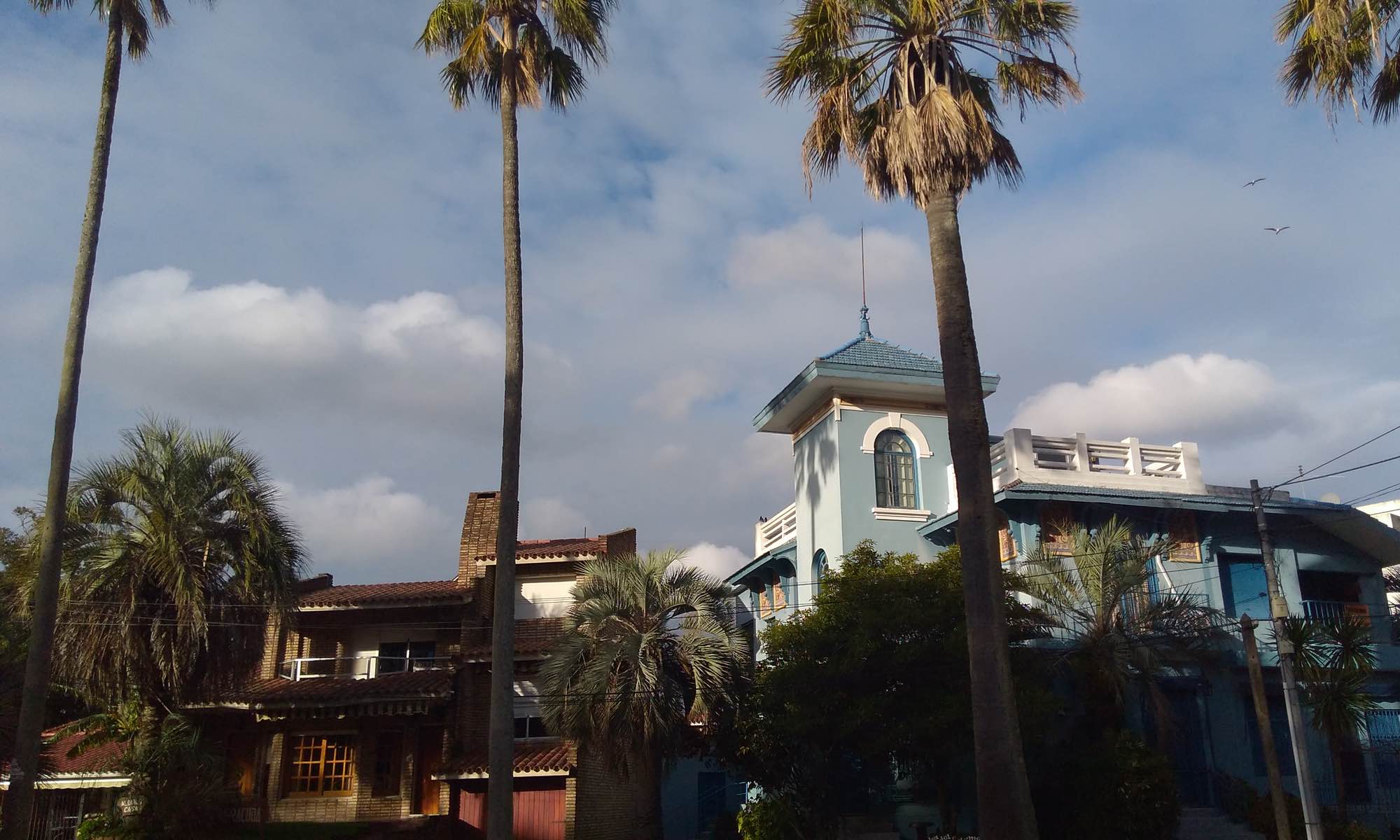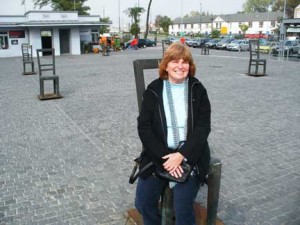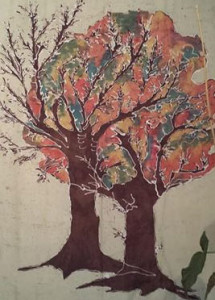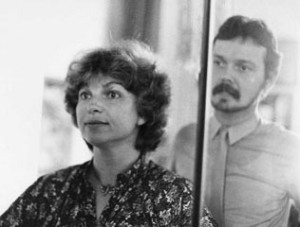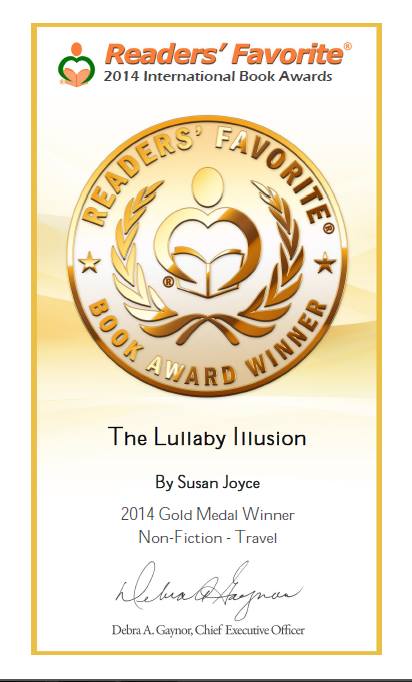
Kraków Monuments
In October of 2008, my husband and I took a train from Vienna to Krakow, Poland. We wanted to see if trains were still a fun way to travel around Europe. We discovered that a lot had changed. I had visited Krakow in the early 70s when it was still behind the Iron Curtain. Seemed strange not to have a border guard come aboard every few minutes and demand to see passports when we exited one country and entered another. As we neared Krakow, a new and more visually charming town came into view. Was it because the sun was shining? My memory of Krakow was of a dark and dreary city where people shuffled from place to place as though sleep walking. Like an old photo—sepia tone without light.
We stayed in a newly renovated fourth floor, walk-up apartment in an old stone building, one block off the 13th-century Main Market Square. Our window views of historical houses and churches was awesome. Unlike other Polish cities reduced to rubble during World War II, Krakow’s skyline had survived unscathed.
By day we walked the cobblestone streets around the lively square (the largest medieval town square in Europe, covering 10 acres) and ogled and awed at ornate mansions and Krakow’s rich cultural heritage. We visited the elaborate St Mary’s Church with its two slender, spired towers reaching high above the city. Horse drawn carriages pulled by white horses pranced about, taking visitors on short city tours. We toured museums, saw the world famous painting, Lady with an Ermine, by Leonardo da Vinci at the Czartoryski Museum.
Krakow boasts of numerous world-class sculptures and magnificent monuments including the famous Florian Gatea—a medieval watchtower erected in the 13th and 14th centuries. Bronze statues and marble monuments are everywhere. and can be found on almost every city block. Standing on the Square of the Virgin Mary is a charming monument of a pensive student standing atop a fountain crying tears that flow into “The Fountain of the Student.” A tribute to Veit Stoss (in Polish: Wit Stwosz), it was presented as a gift to the city of Kraków. The legend says that if you throw a coin in the fountain, you will return to Kraków.
We sat for hours in small pubs and cafes discussing Krakow’s pleasures and treasures. On one street, we viewed unique examples of communist architecture. My artist husband Doug was impressed with the fabulous street graffiti. By evening we dined in both rustic and chic restaurants. Krakow was indeed lively.
One day we toured the famous Royal Wawel Castle and admired its picturesque Renaissance courtyard. We laughed at a fun monument to the Wawel Dragon by sculptor Bronisław Chromy. The sulfur eating dragon belched smoke out in fire-breathing bliss. On our walk back to the main square, we viewed a sculpture of a giant bronzed head, another of someone on a horse, and a copy of the weighty “Battle of Grunwald.” As one of the greatest battles ever to take place in medieval Europe, it was a defining moment in Polish history. We stopped to appreciate a gorgeous sculpture of an orphaned pup “Dżok (Jock)” had a touching inscription, “Most faithful canine friend ever, and symbol of a dog’s boundless devotion to his master.” This work was created by the same artist who designed the belching dragon. A collection box in the back of the pup sculpture encouraged visitors to help orphaned animals of Krakow. There were monuments commemorating poets, artists, musicians, homeland, science, patriotism and valor.
But the most impressive monument was in the “Ghetto Heroes’ Square” in Kazimierz (made famous by the film, “Shindler’s List” by Steven Spielberg). Founded by Casimir III the Great, Kazimierz was an independent city from the 14th to 19th century. A place where Jews and Christians lived side by side in harmony. Until the 20th century.
Entering the square, I saw the eerie display of empty over-sized bronze chairs honoring the murdered Jews of the Podgorze Ghetto. I noticed markings showing the former ghetto walls in the pavement, and a sacred place to burn memorial candles.
Overwhelmed with emotion, I took a deep breath and blessed all who had been forced from their homes and ordered to bring their earthly possessions (tables, beds, chairs, etc) to the square. They were then rounded up and taken away. Most of the 17,000 ghetto inhabitants perished in the Nazi concentration camps of World War II.
I sat on one of the chairs and watched clouds roll past overhead for some time. My mind slowed to a stop as I thought of all the horrors humans have had to endure because of wars. I reflected on those bright minds whose lives were snuffed out senselessly. I thought of the Cyprus War of 1974 and the lives that were lost there and my own personal crisis when I had to flee from my home and leave
everything behind, including my beloved cat. I felt so grateful to have escaped Cyprus alive.
Rejection Brings Gifts

I received a big “NO!” slap from life many years ago when my husband informed me he wanted a divorce on grounds that I didn’t produce a child for him. After many miscarriages and the loss of a baby in childbirth, I was shaken by his insensitivity, his drastic move to end our marriage of 13 years. I tried to convince him, and myself, that we could adopt a child if this was the problem. Of course it wasn’t.
I cried and cried, feeling pitifully sad and abandoned. Worthless! I had given him my heart. What did I get in return? Rejection. I looked at my fearful face in the bathroom mirror, and with a little bit of surprise, asked myself, “What are you afraid of?”
The unknown, being alone? A voice questioned.
I searched deep into my eyes and let the conversation flow.
You’re not alone. You have yourself.
Love yourself. Trust yourself.
The best is yet to come.
Hours later, as a calm settled over me and the city of Frankfurt (where I was living at the time), a piercing cry interrupted my serene thoughts. Through thin walls, from the apartment next door, came squeals of laughter and shrill erotic screams. My thoughts scattered while my heart skipped several uncomfortable beats. Damn. Two guys. Having sex. Loudly! Initially horrified, I reacted: cranked up Billy Joel’s album, The Stranger, to the max. Singing along and dancing wildly, I no longer heard the ruckus from my horny neighbors.
Long after the album had finished, I got ready for bed. Cleaning my teeth and face, I observed light and love in my eyes. I smiled. Getting to know you.
That night I dreamed …
My husband broke into my apartment, rushed into my bedroom and pulled me from the bed. I tried to scream, but my voice didn’t work. He reached for my heart and tried to tear it out of my chest. Frantic, I waved my hands motioning for him to stop. When I screamed “NO!” … his grip loosened and his image faded to black. He vanished.
The next morning sunshine splashed across my eyes, My heart thumped a steady beat. I took a deep breath and smiled. I still have my heart. No one can take that away from me.
Transformed while dreaming, I felt grateful to be alive and thankful for the gifts rejection brought me—forcing me to explore my fears and encouraging me to love and trust myself.
Paradise on Earth
The closest I got to the wilds of Africa was in August, 1975 when a yacht I helped crew from Sri Lanka sailed into the port city of Victoria on Mahé —the largest island of the tropical paradise archipelago of the Seychelles.
After eight treacherous days of heavy weather and a turbulent crossing, from Diego Garcia (the top secret British-American military base in the Indian Ocean), we sighted the Port Victoria beacon. “Yea!” the crew cheered. We tried numerous times to reach the port authorities by radio, but no one answered. According to our calendar it was a holiday—Ascension Day. Having lost our anchor and not wanting to get beached on a corral reef, as we had in Diego Garcia, we let down our sails and drifted for the night. Luckily, it was a calm night.
The next morning, we tried again and again to make radio contact. No luck. Surely they had received word from the British Rep in Diego Garcia that we had no charts to guide us into port and no anchor to sit it out. We waited a few more hours, then tried again. In full view of this idyllic island, bobbing in a gorgeous bay caressed by the turquoise waters of Mahé, I didn’t even entertain the idea of ascending into heaven. I longed to simply step foot on this paradise on earth.
After many unanswered calls to the port authority, our captain decided we must make our way into the safety of the inner harbor before dark and find some way to tie onto something. Seeing no one in sight, we drifted in. Surely someone would meet us as we entered.. A man came running out along the dock, waving his arms and yelling, “Go, go back out to sea and wait until tomorrow.” Megaphone in hand, our captain explained our dire situation of not having an anchor on board. The man listened, then agreed we could tie onto a buoy near the dock and wait out the night.
So wait we did. And after many weeks at sea, that night I dreamed of eating fresh fruit and walking barefoot along the white sandy shore.
And the following day … I did just that.
Somewhere …
 As a kid, I had dyslexia and talked funny, said things backwards. But when I would open my mouth to sing, all the words flowed beautifully. Music was my therapy and helped give me confidence.
As a kid, I had dyslexia and talked funny, said things backwards. But when I would open my mouth to sing, all the words flowed beautifully. Music was my therapy and helped give me confidence.
If someone laughed at me, I would think, wait ’til you hear me sing. I’ll show you talent. And sure enough when I opened my mouth and belted out a song, the person who had laughed was speechless because I knew how to hit the high notes, the low notes, and I could harmonize with anyone.
Or so I thought … until Germany. I often sang duets with my friend who owned a jazz club where she entertained guests most evenings. Another friend of mine helped behind the bar. One evening, the bartender friend shared that she would love to be able to sing, but couldn’t carry a tune. I assured her that everyone can sing something, with practice. She smiled and told me she could do other things well, but not sing.
Wanting to encourage her, I suggested we sing a song together—after the bar closed . A song of her choice. She said her singing would just make me laugh. I promised not to laugh.
“Okay.” she shrugged and giggled.
“What would you like to sing?” I asked.
“Somewhere Over the Rainbow.”
So I sang the opening verse and encouraged her to join in. “Come on,” I said, starting the song over.
“S-ome wher-er,” she tried to hit the notes, but ended up sounding like she was purposely singing off-key.
“Falsetto?” I asked.
She tried again. “See I told you,” she said laughing.
I stifled a grin and we tried one more time.
“S-ome wher-er,” she tried to sing it.
“You’re right,” I said, bursting out laughing.
She giggled, then laughed.
I howled laughing and laughed so hard, I had to excuse myself and go to the bathroom.
When I returned, she asked, “Now, do you believe me?”
I held my sides and laughed again. “I do. You could give Tiny Tim a run for his money singing Tiptoe Through the Tulips.”
“I told you so,” she said, putting wine glasses back on their shelves.
I had to reconsider. Everyone can sing something? Well, maybe not something well…
Year later, after she became a world class chef and owned a catering company in Washington, DC, I met her for dinner. one night and we reminisced about our attempt to harmonize on “Somewhere Over the Rainbow.”
“Were you purposely trying to throw me off key?” I asked.
“No,” she said. “I knew then I needed to learn to cook since I obviously couldn’t sing for my supper.” We shared another good laugh.
Growing Together
A few weeks ago, I received a message from a friend I knew in Germany in the late 70s. He said he was thrilled to be reading my book and was having fun identifying characters in the book—characters he knew as well while living in Germany. I was delighted to be in touch with him again.
A few days later, he posted a photo of a batik painting that hangs in his living room. His message read: Susan, do you remember? What was the painting called?
It sure looked like one of mine, but I wasn’t absolutely sure because during my artist days I produced paintings and sculptures on a variety of subjects. I looked at the photo for some time, sorting through memories of my days into years as a working artist in Europe. I let my mind roam until it focused on my nature period where I was fascinated with the cyclical changes that occur with seasons.
Looking at the painting of the two oak trees—one with leaves changing colors and the other bare of leaves—I remembered exactly when I sketched the idea for the painting.
It was a brilliant sunset evening. I was sipping a glass of Chardonnay, listening to Vivaldi’s “Four Seasons,” and watching the evening light change in the garden below my living room window. Two tall oak trees stood side by side, growing close together. One had lost its leaves while the other had lustrous colored leaves of green, copper, red, and deep purple. As the moon ascended above the silhouette of buildings located on the main boulevard, I reflected on my personal cyclical changes and made a quick note on the sketch.
From green, the leaves turn gold, then gone.
Stripped bare, the bones stand all alone.
New buds in spring,
new life will bring. …
I answered my friend. It’s called, Growing Together.
Michael
Michael is one of the main characters in my memoir because he greatly influenced my life. I adored Michael. My first close gay friend, he was just stepping out of the closet within the confines of friends when we met in Frankfurt, Germany in 1976. He became my solace at a low tide in my life and introduced me to the vibrant world of opera and theatre. He had an obsession with theater and anything presented live on stage. He had performed in a few shows in small theaters and his dream was to finish a play he had started writing years before and see it published one day.
“Love Wagner’s. Great action and food.” Michael smiled, eyeing a young man across the room. “Everyone thinks I’m a movie star.”
“You’re the spitting image of a young Tony Randall,” I told him.
“And as fastidious and fussy, I trust.”
”You’re not fussy. Just choosy,” I assured him.
Michael of course then educated me on the origin of the phrase ‘spitting image’ and we both had a good chuckle. I fondly called him ‘Mister Walking Encyclopedia’ because he knew obscure facts and figures on any subject conceivable. Michael always knew the real scoop. He loved fancy words and loved to use them.
“Gaydar,” he explained eyeing an attractive waiter, “is how I know if someone’s straight or bent.”
I chuckled. “Did you just invent that word?”
“Probably,” he replied.
He invited me to a play I hadn’t seen before at the English Theatre. “It’s a trivial comedy for serious people by Oscar Wilde. The second most known and quoted play in English after Hamlet.“
“I’ve seen Hamlet performed,” I said.
“This one’s a farce,” Michael said smiling, “The Importance of Being Earnest, first performed on Valentine’s Day in1895. It’s nonsense that makes sense, if you get beyond the words.”
“Sounds like a must see,” I said, wondering what the hell I was getting myself into.
I found the play a bit silly, but great fun. When the final curtain closed, we stood and wildly applauded again and again.
“I just love Wilde’s British dandyisms.” Michael chortled.
“Some wild expressions,” I agreed.
“Classic Wilde,” Michael continued, “They speak volumes about the hypocrisies of society. Then and now. Reprobates always have more fun.”
I laughed.
As we discussed the play’s “real” meaning over wine later that evening, Michael educated me on the dark history of the play and the eventual exile of Oscar Wilde.
“Ernest was Wilde’s alter-ego,” Michael informed me. “Dishonesty and pretense about morals damage our souls.”
“Wilde was criticizing Victorian society,” I said.
Michael smiled and took another sip of wine. “His speaking out landed him in prison.”
“Why?”
“Indecency. Romping with a royal. Of the same sex.”
“Wow!” I said, letting it sink in. “His writing is harsh satire.”
“And still rings true today,” Michael said.
Michael taught me many different things—some shocking, some fun, some frivolous, some serious, but all inspirational. All encouraging. He taught me about striving and thriving, and being different, and accepting differences in others.
Years later when I searched for the word “gaydar” in a dictionary, I realized that Michael may well have invented the word since the first known use, according to the Merriam Webster Dictionary, was in 1982.
When the final curtain closed on Michael’s life in 1986, he left a trail of love, light, and divine information. Too bad he didn’t live long enough to witness the gay civil rights happening today. But knowing Michael, he’s aware and smiling.
Throne Thinker
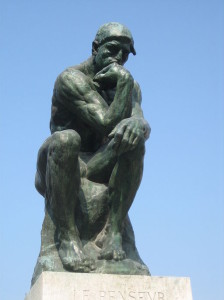 While sitting on my throne yesterday, I did what every human does when he or she sits down on a toilet seat and gets comfortable. One sits and thinks, or one sits and plops. I found myself getting so comfortable, I started thinking about what makes something comfortable or not.
While sitting on my throne yesterday, I did what every human does when he or she sits down on a toilet seat and gets comfortable. One sits and thinks, or one sits and plops. I found myself getting so comfortable, I started thinking about what makes something comfortable or not.
I’m certain these thoughts were a result of a conversation I had had with my husband a few days ago when he informed me that his search for the perfect toilet seat was over. “I have found the best one for me,” he said. He went on to explain that for years he thought the round wooden ones were best because of their solidness and warmth. But over the years the plastic ones had improved in density and the elongated, contour shape was more comfortable.
As I sat on my wooden toilet seat in our upstairs bathroom, my mind drifted to toilets I’d seen in my travels. While touring the Topkapi Palace in Istanbul, Turkey years ago. I viewed the sultan’s squat toilet—a hole in the ground surrounded by a fine marble floor and walls. One afternoon, at a fancy five star restaurant in the hills near Istanbul, I was directed up a stone path that lead to the women’s latrine. It was immaculately clean, with shiny marble floors, beautiful inlaid mosaic tiled walls, and a porcelain sink sitting atop a carved olive wood stand. I marveled at the elegance. I pushed open the door to the private toilet. Whoa! No commode in sight, just a shiny ceramic square shaped squat box with a pair of footpads on either side of the drain. So I scooped up my long dress, straddled the hole, and did my biz. No toilet paper in sight, but a clay jug of water was positioned close by for cleaning up. Not very comfortable.
Days later, while wandering through the ancient city of Ephesus, one of the largest and most important in the Greco-Roman world, I was amazed to see paved roads, terraced houses for the wealthy with luxurious bedrooms, bathrooms, kitchens, and a triclinium room for dining and reclining. The Ephesians had advanced public works with impressive plumbing. The municipal toilets, located in the big outdoors, were long marble benches with horseshoe shaped holes. Below the bench was a water channel for carrying away wastes. I sat on one of the horseshoe shaped seats for a photo op, but of course didn’t use it. The seat itself felt quite comfortable.
My mind skipped ahead to other toilets I’d encountered along life’s way. From holes in the ground, to buckets, to outhouses, to a chair with a hole in the seat and a pot underneath. All worked as collectors of waste and were absolutely necessary when I needed to go. Some however more comfortable than others.
There was a really nice bathroom in our hotel room in Cairns, Australia, when we visited there in 1998. A very comfortable toilet seat … until the chambermaid informed me that in Australia one has to be extra careful when using the toilet because spiders often hide under the seat. Not just any ole’ spiders, but the small, deadly ones. From then on, I inspected every toilet seat I encountered in Australia.
My most uncomfortable toilet seat ever was in London. While visiting a writer friend in a marvelous old Victorian mansion (resembling the Munster Mansion), I sat for hours in his wife’s private suite. A songwriter and poetess, she was entertaining. Needing a potty break, I offered to go downstairs and use the guest bathroom but the wife insisted I use hers. I excused myself and entered her bathroom. Seeing the fur-lined toilet seat, I thought, dramatic like her. Sitting down, I gasped in horror and immediately jumped up. A heated toilet seat? Imagine the creepy crawlies that live in that warm fur. I finished my business with a quick squat.
“The Thinker” (Le Penseur) by the French artist Auguste Rodin is a sculpture of a nude male figure sitting on a stone pedestal philosophizing. Perhaps it was his most comfortable seat.
Elephant Alarm Call
Human-specific elephant alarm call?
Interesting to me because a dream of a talking, singing elephant launched the idea for my first children’s book. It happened in Germany at a time when I was quite ill with pneumonia. I was sick for some time, spent weeks in bed. Lots of time to dream and think about life. One night an elephant appeared in a dream. Standing at the foot of my bed, he swung his long trunk and began singing a song to me. It was a song about learning from the good and bad in life. Looking back I feel the elephant was sounding an alarm for me to wake-up and become more spiritually aware. The dream and the elephant’s inspirational song moved me a giant-step forward in life.
Why Dream?
In traditional cultures, people tend to believe dreams reveal hidden truths about themselves and the world around them: when the body sleeps, the soul is free to wander the universe and collect information. I like that idea.
Scientists, searching for ways to explain and define dreams report that dreaming is just another way of thinking, on a different level. Thinking in the sleep state. Something I’ve known since childhood because my dreams always seem so real and full of meaning. Hours after dreaming, I can recall detailed images, voices, and symbols. Typically, I don’t recognize the meaning of the dream immediately, but I sense if it contains something significant. It often seems like a secret message sent to me in code from another dimension. A code only I can decipher through careful observation, and a willingness to welcome and embrace the hidden truth of the dream.
As a child, I sometimes felt like Cinderella waking up in the middle of a dream and finding myself in an exciting, glamorous, improbable life. And then I would wonder, does one use a dream to rehearse life, or live to rehearse a dream? Or, am I perhaps awakening to a life I dreamed of having that actually came true?
As a kid, one of my greatest role models was my great-aunt Gladys. A retired school teacher, she married a banker and they traveled the world. Once a teacher, always a teacher—she sent picture postcards to her family and friends. For me, it was so exciting to receive a postcard from destinations far away—places I dreamed of visiting one day. I used to sleep with those postcards on my heart and imagine they were magic carpets that could fly me to the exotic place shown on the postcard photo.
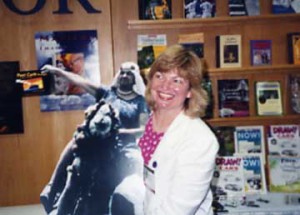
Guess what? Years later, I have visited most of the places Aunt Gladys traveled to and even wrote a children’s book to honor her, and her positive influence in my life. Her postcards encouraged me to explore the great big wonderful world. I believe that my far fetched dreams over the years are the reason I live a most extraordinary and exciting life.
Do you pay attention to your dreams? Do you keep a dream journal? If so, I’d love to hear from you.
